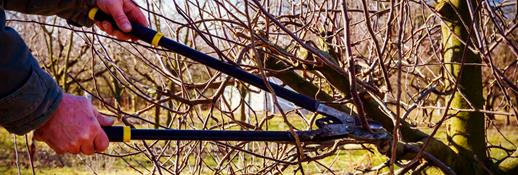
It can be time-consuming and expensive to keep your home and garden in good condition. There is often a never-ending to do list, and it can be hard to know what to tackle and when.
So, to help save you time, money and assist with prioritising that list, we’ve outlined the best times of year to tackle some common household and gardening tasks.
Remodelling and redecorating
If you’re planning a bit of DIY, it can help to start buying what you need after the Christmas holidays.
Autumn is the busiest time for the design industry, since many homeowners are trying to rush through their renovation projects before the December break. By holding off on until the new year, you’ll benefit from emptier showrooms, get more attention from design consultants, and you may even be able to take advantage of the seasonal sales.
If you’re hiring someone to take on remodelling or redecorating for you, spring or early summer are great times to hire in contractors. Not only are they likely to be more available at this time of year, but the longer days and milder weather solve a lot of potential issues for contractors, meaning they’re likely to complete the project a lot faster.
Remember that if you’re planning for a spring or early summer remodel, as it’s not unusual to book the job in as early as six months in advance, so try to get them booked in as soon as you can.
Roof Repairs
If you’re noticing damp patches, mould growth or sagging in your ceilings, you may need to replace or repair your roof. Obviously, it’s not a job you’ll want to have done unless absolutely necessary and you’ll want to speak to a professional.
Though summertime may seem like the ideal time for roof repairs, due to the warmer weather and reduced rainfall, installing a new roof in the winter avoids the ‘peak season’ for professional roofers. Not only does this mean potentially saving money on labour, but you also shouldn’t face too many delays in getting the project started, as long as the weather is on your side.
Trimming trees
If you have enough outside space to give a home to some trees, over winter they can gradually become overgrown and need a little love. But when should you tackle tree pruning?
Many trees benefit from pruning in late winter. Cutting them back during a period when they’re growing at a slower rate encourages new growth as soon as the weather begins to warm again in the spring. Trees also lose their leaves in autumn and winter, making it easier to identify branches that require removal.
It does depend on the type of tree though, so it’s worth doing your homework on your exact specimen before you start. If you’re not sure what trees you have, apps like PlantNet or PlantSnap are fantastic free and easy identification tools (you just take a picture and have your answer almost immediately).
If you’re looking to remove a tree entirely from your garden, professional tradesmen tend to be cheaper between February and March.
Repotting house plants
Peace lilly looking a bit droopy? It could be getting a little big for its pot. It’s tempting when this happens to intervene as soon as you notice the problem, but plants hate being moved around during the colder months.
Try repotting houseplants as the warmer weather rolls in – this is likely to be the middle of April at the earliest. The plant will transition into a growth state as it receives more sunlight in spring, meaning it will recover quickly from the shock of moving pots.
April through August is also the best time to fertilise your houseplants, keeping them strong and healthy throughout the cold, damp winter months.
Mowing the lawn
Depending on the weather, you may opt for a first annual mow in April, as the weather gets warmer and grass starts to shoot up. As the seasons are more erratic at the moment, this could be March, so watch for those early tell-tale signs.
But if you prefer a less-manicured look and like lawns full of flowers and long grass, then you needn’t cut your grass at all in spring.
In the summer, the average lawn needs mowing twice weekly, or once a week or less during periods of drought.
Come September or October, depending on the year, colder weather and frosts will prevent the grass from growing too unseemly.
Replacing your boiler
Do you need to replace your boiler? It can be an expensive investment. Sometimes a boiler can breakdown and you may not have much choice about when you replace it. But if you do have time on your hands then try and take advantage of the warmer months – when you’re using less hot water and probably no central heating – to have your boiler replaced. If the instalment time takes longer than expected, you won’t be suffering in the cold while you wait for it to be fixed.
Besides, heating engineers tend to busiest in the winter months. Also, having a new boiler in place by the beginning of autumn also leaves you plenty of time to test it out before the crucial winter months when it will be running more frequently.


